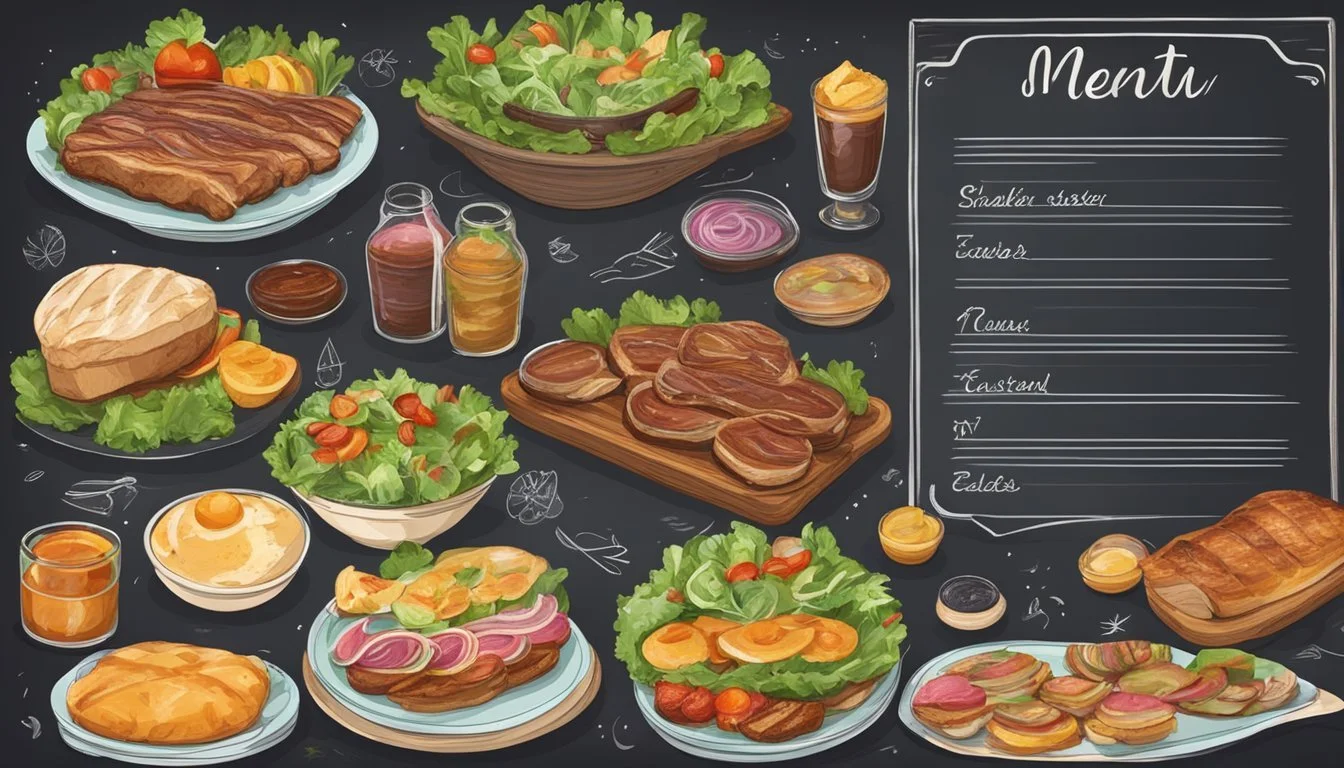How to Host a Large Easter BBQ Gathering
Your Ultimate Planning Guide
Easter celebrations combine reverence with joy, and a large Easter BBQ gathering is a wonderful way to bring friends and family together. As spring emerges, it's an opportune time to host an outdoor event that complements the festive spirit of Easter with the casual ambiance of a backyard barbecue. Planning such an event involves consideration of space, as larger groups might be more comfortable in accommodating parks or large backyard spaces where guests can mingle and children can play.
Organizing a memorable Easter BBQ involves careful attention to detail. An event host should ensure a variety of food suitable for the grill, from traditional Easter fare to BBQ classics, to cater to diverse palates. To create a cohesive atmosphere, incorporating Easter-themed decorations with a chosen color scheme can set a festive tone. Engaging activities and games that resonate with the holiday can provide entertainment for all ages, making the barbecue both enjoyable and memorable.
The success of a large gathering also lies in the seamless experience for the guests. Determining ample seating arrangements and ensuring a flow of activities without overcrowding are essential. A well-planned Easter BBQ will leave guests relishing the tastes and memories of a well-spent holiday gathering, while celebrating the essence of Easter in a community setting.
Planning Your Easter BBQ
Hosting a large Easter BBQ gathering requires careful planning and organization. The following subsections offer guidance to ensure your event is well-prepared and enjoyable for all attendees.
Selecting the Date and Time
Choose a date and time that align with springtime weather patterns to maximize the chances of a pleasant outdoor event. Easter weekend is a traditional choice, but ensure to check the weather forecast in advance.
Choosing the Location
Consider the size of the gathering when selecting a location. A local park can accommodate larger groups if your backyard isn't large enough. Ensure your chosen location has access to necessary facilities and that it allows for grilling.
Preparing a BBQ Checklist
Create a comprehensive checklist detailing equipment and supplies required. Essentials include:
Grill (charcoal, gas, or electric)
Smoker (for meats requiring slow cooking)
Fuel (charcoal or propane)
Cooking tools (tongs, spatula, grill brush)
Food items and condiments
Seating arrangements and tables
Trash and recycling bins
Considering Dietary Preferences
Plan a menu that caters to a variety of dietary preferences. Include vegetarian options and consider potential food allergies. Offering a diverse menu ensures that guests with health concerns or specific diets, such as gluten-free, also have enjoyable options.
Deciding on a Theme
Implement an Easter theme to create a festive atmosphere. Use decorations like pastel-colored tablecloths and Easter-themed centerpieces. A theme can guide your decoration choices and add an extra touch to the gathering.
Understanding Local Laws and Regulations
Research local laws regarding public gatherings and grilling in public areas. Ensure compliance with fire safety regulations, noise ordinances, and any required permits to avoid any legal issues during your BBQ.
Sending Invitations
Send out invitations well in advance, including all the key details like date, time, and location. Digital invitations can be convenient and efficient, while paper invitations might align better with a more traditional theme. Include an RSVP request to aid in your planning process.
Menu Planning
When hosting a large Easter BBQ gathering, the key is to plan a diverse menu that caters to all tastes and dietary preferences, ensuring there are appropriate options for mains, sides, beverages, desserts, and special accommodations.
Main Dishes
The main dishes should be the stars of the BBQ. Classic Easter ham, marinated in honey and garlic, presents a festive highlight. For variety, include beef burgers, smoked lamb, and pork ribs (What wine goes well with pork ribs?) to satisfy different preferences. The inclusion of a signature smoked deviled eggs dish will add a unique touch to the Easter theme.
Sides and Accompaniments
Side dishes should complement the main courses, with a mixture of traditional and unique offerings:
Vegetarian Options: A refreshing fruit salad and a variety of grilled vegetables (What wine goes well with grilled vegetables?) cater to those with dietary restrictions.
Staple Sides: Creamy potato salad and coleslaw are must-haves for a BBQ.
Breads: Offer an array of bread rolls, sliced baguettes, and perhaps some buttermilk biscuits for variety.
Refreshing Beverages
A selection of beverages keeps guests hydrated and happy. Be sure to offer:
Non-alcoholic: Homemade lemonade, iced tea, and infused waters.
Alcoholic options: A range of beers, wines, and perhaps a special Easter-themed cocktail.
Delectable Desserts
No BBQ is complete without a sweet treat. Alongside a traditional Easter dessert, such as carrot cake, offer bite-size options like brownies and cookies for the children.
Creating a Signature BBQ Sauce
Elevate the experience by creating a signature BBQ sauce, blending sweet, spicy, and smoky flavors. Offer a range of sauces and marinades at the table for guests to choose from.
Accommodating Special Menus
It's important to consider guests' dietary preferences. Offer clearly labeled gluten-free and vegan options to ensure everyone enjoys the celebration without worry.
Setting Up a Buffet Line
A well-organized buffet line ensures a smooth flow. Arrange plates, napkins, and serving platters methodically, starting with main dishes and followed by sides, sauces, and desserts. Remember to keep hot items and cold items separate and ensure there's enough cutlery and condiments for everyone.



